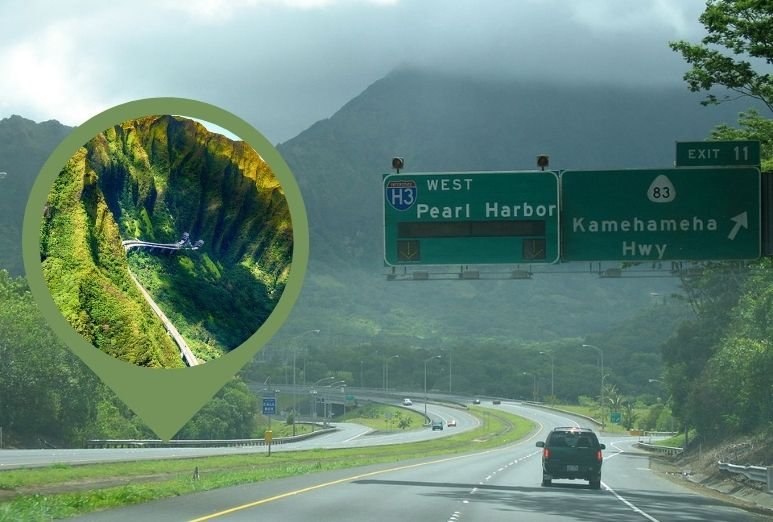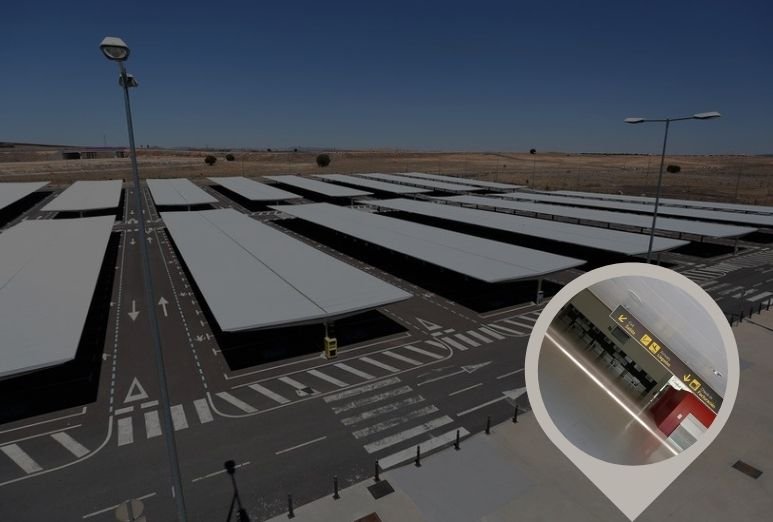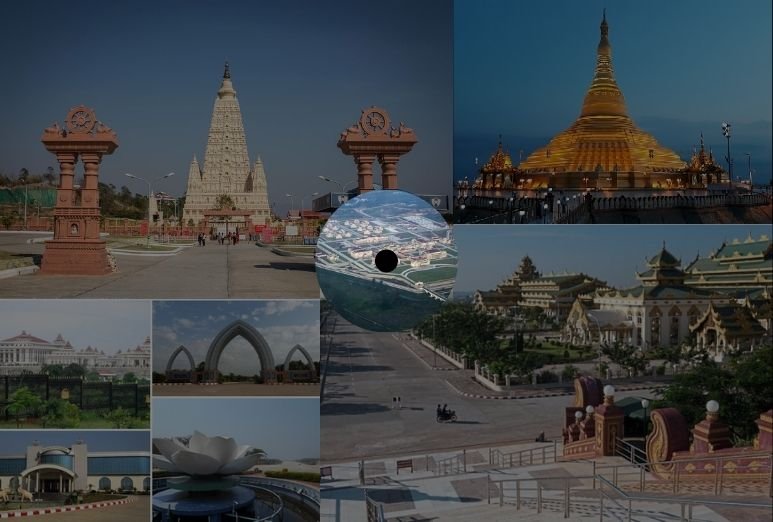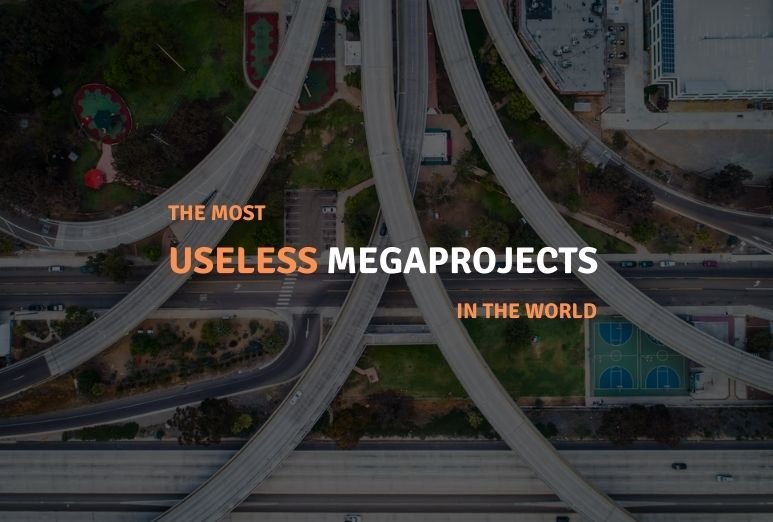Architectural development signifies a country’s economical growth. If you see what Dubai was a few decades ago, you will not be amazed by what they are today. They converted a desert into a tourist destination and business hub where people from around the world come to either visit or to do business. However, the craze of architectural development has led to some unavailing events as well. Here is a list of the most useless megaprojects in the world that will amaze you.
Did you know that there is a capital city that was built for millions of people but remains practically empty, and that the US wasted $17 billion for a mega project that was never even used and remains completely useless to this day. Today, we will explore five of the most useless megaprojects in the world
1- Interstate H3 – Hawaii
Let’s start with a breathtakingly scenic highway in the Aloha State Hawaii, the 26 kilometer long interstate h3 passes through one of the most stunning landscapes in the world. It is so stunning that there were genuine concerns of motorists stopping and creating traffic hazards. However, the highway is as controversial as it is beautiful.

It was first proposed in 1960 with defense considerations in mind as the highway would connect the Pearl Harbor naval base on the south side to the Marine Corps Air Station on the East Coast. The announcement of its construction was immediately met with resistance from environmental groups, as well as Native Hawaiians who are worried about the massive urbanization the project would bring. environmental laws of the time and a change of route to protect the surrounding valleys delayed the plans indefinitely.
26 years later, the environmental hurdles were removed when the Congress exempted the project from environmental laws and cleared the way for construction to finally begin in 1989. The highway was finally opened in 1997, almost 37 years after it was originally proposed. Interstate h3 is often considered an engineering marvel because of the difficult terrain it is built on and be advanced technologies used in its construction. In addition to the numerous high tech tunnels, the highway runs almost exclusively over via ducts to protect the local environment in the valleys below. Decades of decay route changes and newer but more expensive technologies meant that it was completed five times over the original estimated budget.
The total cost of construction was $1.3 billion, which is about $50 million per kilometer, the most expensive cost per kilometer in the world. Despite the enormous budget this beautiful highway isn’t useful for everyone. critics believe that it’s a road to nowhere because the defense considerations of the 60s are no longer relevant, and the highway has no direct route to Downtown Honolulu. Then there’s the case of Native Hawaiians a majority of whom refuse to use the h3 to this day, they consider it to be cursed as many religiously significant cultural sites were destroyed during its completion. The interstate h3 highway is certainly an achievement as far as mega projects go. However, for certain native groups, it remains useless.
Although it is one of the most useless megaprojects in the world, at least it isn’t completely abandoned, like the next project on our list.
2- Ciudad re our Central Airport – Spain
Spain is one of the prime travel destinations in Europe. And that was a key consideration when the idea for the ciudad re out central airport was conceived. It was tipped to be the go to destination for holiday travelers within Spain as well as international visitors. The vision for this new airport was to make it an alternative to the already heavily overcrowded main airport in Madrid. The new airport had one of the top five longest runways in Europe and can serve 2 million passengers a year. That’s a relatively low number compared to Madrid 70 million passenger capacity. However, expansion plans were already in motion to boost the capacity up to 10 million annually.

So when it finally became operational in 2009, the $1.3 billion expense might have seemed justified. However, all these plans came to a grinding halt in 2012 when the company behind the project filed for bankruptcy. The problems began with the location of the project. While it was called the central airport, it wasn’t central in any way as it was located 200 kilometers away from Madrid. This compounded problems as most of the passengers avoided traveling for hours to get to the remote location and most big airlines preferred to carry out flight operations from the capital. So within the first year of opening, the newly built airport was reduced to a single small time airline.
With no major airlines to attract passengers. The airport had accumulated a $350 million debt by 2012. Unsurprisingly, it went into receivership and was put up for auction in 2013. The airport was even popularized as an abandoned location By the hit British TV show Top Gear in 2014. After multiple auctions fell through, including an outrageous $12,000 offer, the airport was finally sold to new owners in 2019.
A Spanish airport that costs 1 billion euros to build has attracted a bit of just 10,000 euros Xia drowsily LaMantia airport opened in 2008, only to go bankrupt and close by 2012.
As businesses crashed and profits dwindled during the COVID 19 pandemic, the ciudad Rael airport got a lifeline. With little hope of passengers returning the new owners reinvented the airport as a home for grounded planes given its dry climate, long runway and spaciousness. By August 2020. There were 65 Airplanes parked on the airport with expansions underway to provide a storage facility for over 300 aircraft. This new storage approach gave the airport a much needed business opportunity. However, all the stored planes will eventually be gone once the pandemic is finally over and the return of normal flight operations remains elusive.
This billion dollar mega project remains effectively useless for passengers is why we included it on the list of most useless megaprojects in the world.
3- Naypyidaw – Myanmar
Third on the list of the most useless projects in the world isn’t just a remote airport. It’s the capital of Myanmar, a new capital that was built from scratch. Myanmar’s former military leadership started building a new capital in secret in 2002. The shifting of a country’s capital isn’t unheard of as many countries including Brazil, Egypt and Pakistan have done so in the past. Islamabad being the capital of Islamabad has the most scenic views. Click to see the best places to visit in Islamabad.
In November 2005, Myanmar’s leader announced his decision to the public but he kept the name of a new capital a secret.

It was four months later when he finally revealed the name Naypyidaw, which literally means the Kings residents. The reason for this sudden shift of capital wasn’t clear. Some speculated that the military leadership was fearful of an attack from the sea, while others thought it was shifted on the advice of astrologers. However, a lot of it had to do with the former capital, Yangon, which is home to 7 million people and the city is said to have reached its infrastructural limits, and its population is set to double by 2050.
Moreover, the coastal city was established as the capital during British rule to benefit the British Navy. So it made sense for Myanmar to shift the capital to a more central location. The new project was built swiftly and to this date, the successive governments have poured $4 billion into the city.
Naypyidaw seemingly has everything to attract visitors a 20 lane highway, over 100 luxury hotels divided into three hotel districts, golf courses, museums, and even a 99 meter tall replica of a landmark originally situated in Yangon. But there’s one essential component that remains missing. The population! This new capital is home to less than a million residents, most of which reside in the suburbs that were present even before the city became the capital.
But why does no one want to live there. A lingering gap in health facilities, lack of quality educational institutes and economic opportunities mean that most of the population is reluctant to make the city a permanent home. So the city often paints the picture of a deserted place and is often referred to as a ghost town. The Incredible 20 lane highway is practically empty. Traffic congestion is unheard of, and at times, a single automobile is caught drifting along the tremendous road. It may have a future but to date, it is one of the most useless megaprojects in the world.
The city has an airport that can handle 3.5 million passengers every year, but on a busy day, a dozen people will actually use it. The shopping malls are visited only by the diplomatic staff on weekends, while the hotel lobbies are mostly empty. Despite the apparent barrenness, there’s a silver lining for the Royal Capital. It’s built as a city of the future and with the exploding population in Naypyidaw, it still has time for an inevitable redemption. For now, it’s arguably the World’s Strangest capital and remains useless for much of the country’s population.
4- Forest City – Malaysia
We talked of an apparent ghost city and next on our list is a green futuristic smart city that would rise from reclaimed land on four artificial islands and will be built around an artificial forest ecosystem. Forest City’s location makes it an appealing bet for investors who are aiming to profit from its proximity to the independent city state of Singapore. Singapore has the world’s second busiest port and a thriving economy.

The developers have already linked Forest City with Singapore through the second link bridge, shortening the distance between the cities to just 20 minutes. Forest City will also have its own customs facility, enabling residents to move freely to Singapore and back. The design is advertised to incorporate many green innovations Forest City will feature buildings with green rooftops and vertical gardens providing a jungle experience. City Streets will have a multiple layer design with the lower layer for traffic and parking spaces. While the upper layer will feature parks, sports facilities and transport hubs.
The city will be powered exclusively with renewable energy and will be completed by 2035 at a cost of $100 billion. One of the four proposed islands is close to completion with 50 apartment buildings, golf courses, swimming pools, and beaches on board. However, it’s not all smooth sailing for this highly ambitious project. A multitude of economic and political hurdles are already hindering its progress.
The project is being funded mainly through China and Chinese residents virtually had a free pass to the city in the first few years of its construction. As a consequence, wealthy Chinese investors who couldn’t afford the soaring prices of apartments in their own country rush to Forest City. By 2019 80% of the property owners were Chinese. Even the street signs were in Mandarin, and the few schools that opened in the area were offering Mandarin courses. The native Malaysians simply can’t afford to buy these apartments as property prices are set with only the Chinese markets in mind. This influx of Chinese investors caused a public outcry with opponents of the project calling it a new form of colonialism. So after a change of leadership, the returning Prime Minister Mahathir Mohamad banned foreigners from owning property in the Forest City.
Many foreigners started leaving the city and new investors were discouraged. The next major setback came in the form of the pandemic and the worldwide travel bans. Malaysia’s movement control order meant that no new investors could move in. Lots of existing investors opted out of the project due to the uncertainty. So by the start of 2020, less than 500 people were actually living in the residential developments, which is not a lot considering that Forest City is designed for 700,000 people. No one knows what may happen to this unrealistically amazing infrastructure in the future. This is why we included it into the list of the most useless megaprojects in the world.
The project has remained in flux ever since, with some sales people claiming that fewer than 10 homes were sold at Forest City since the start of the Coronavirus pandemic. Moreover, Country Garden laid off more than 1000 of its Malaysian workers in the past year signaling the epic downturn in the project’s fortunes. Forest City was probably too ambitious to begin with too futuristic to truly achieve and too politically challenged to succeed anytime soon. It’s safe to assume that despite the billions invested Forest City is currently a useless mega project.
5- Yucca Mountain – Nevada
You can mount a nuclear waste repository. We’ll conclude this list with a mega project that was planned in view of a sensitive global issue. Nuclear Waste isn’t talked about as much as other environmental problems. However, if not stored properly, it can be deadlier than anything ever witnessed since the advent of civilization. As of now, nuclear waste is stored above ground near the power plants where it comes from. However, the scientific community agrees that the safest permanent disposal solution is to store this hazardous waste deep underground. In the 1980s us authority set about finding a permanent solution to this growing waste problem.

In 1987. Yucca Mountain in Nevada was identified as the best available option. It was close to the USA is most used nuclear testing site and was away from any population centers. The plan was to deposit the waste from all over the country in a tunnel complex about 300 meters under Yucca Mountain. In addition to the isolated location you can Mountain is made up of volcanic ash formed millions of years ago. It allows the Yucca Mountain to absorb any radioactive waste without crumbling or cracking you come out in seemed like a great location for a repository on paper, but Nevada ins were having none of it.
The United States has over 100 operational and closed nuclear reactor sites in 34 states but none of them were in Nevada. So the congressional representatives and the general public vigorously opposed the idea of being the only nuclear dumping site in the whole country. Furthermore, question marks were raised over the official hydrological and geological surveys of the Yucca Mountain. Opponents belief that the site was unsuitable for a repository as it runs the risk of contaminating a nearby water source. The water source flows into Amargosa Valley and is used by Native Americans who have lived in the area for centuries.
Despite the opposition, the project won approval in 2002 and the Department of Energy resumed construction. However, Nevada’s opposition only grew stronger. They contended that routine exposures during the transition will stigmatize Nevada as residents and affect tourism in the state. For the opposition, the only reason Nevada was getting the repository was because of its lower population and smaller representation in Congress.
By the time Barack Obama took office, the whole project had become highly politicized. In 2010, the Obama administration deemed the project unworkable and stopped funding it. Three years later, a federal court ordered its resumption again. But there has been little progress since the Biden administration has clearly stated that yoga mountain isn’t a part of the country’s plans anymore. Nevada seems to have won the battle after four decades, decades of planning, legal troubles, and over $17 billion have gone into the Yucca Mountain project. But after all is said and done. It has never been used and remains a useless mega project.
This is it on the list of the most useless megaprojects in the world. Do you think that any of these have a shot at being useful in the future? Let us know in the comments down below. If you want to see more about similar projects, you can watch our video about the biggest mega projects never finished. Thank you for watching, and we’ll see you in the next video.


















Leave a Reply